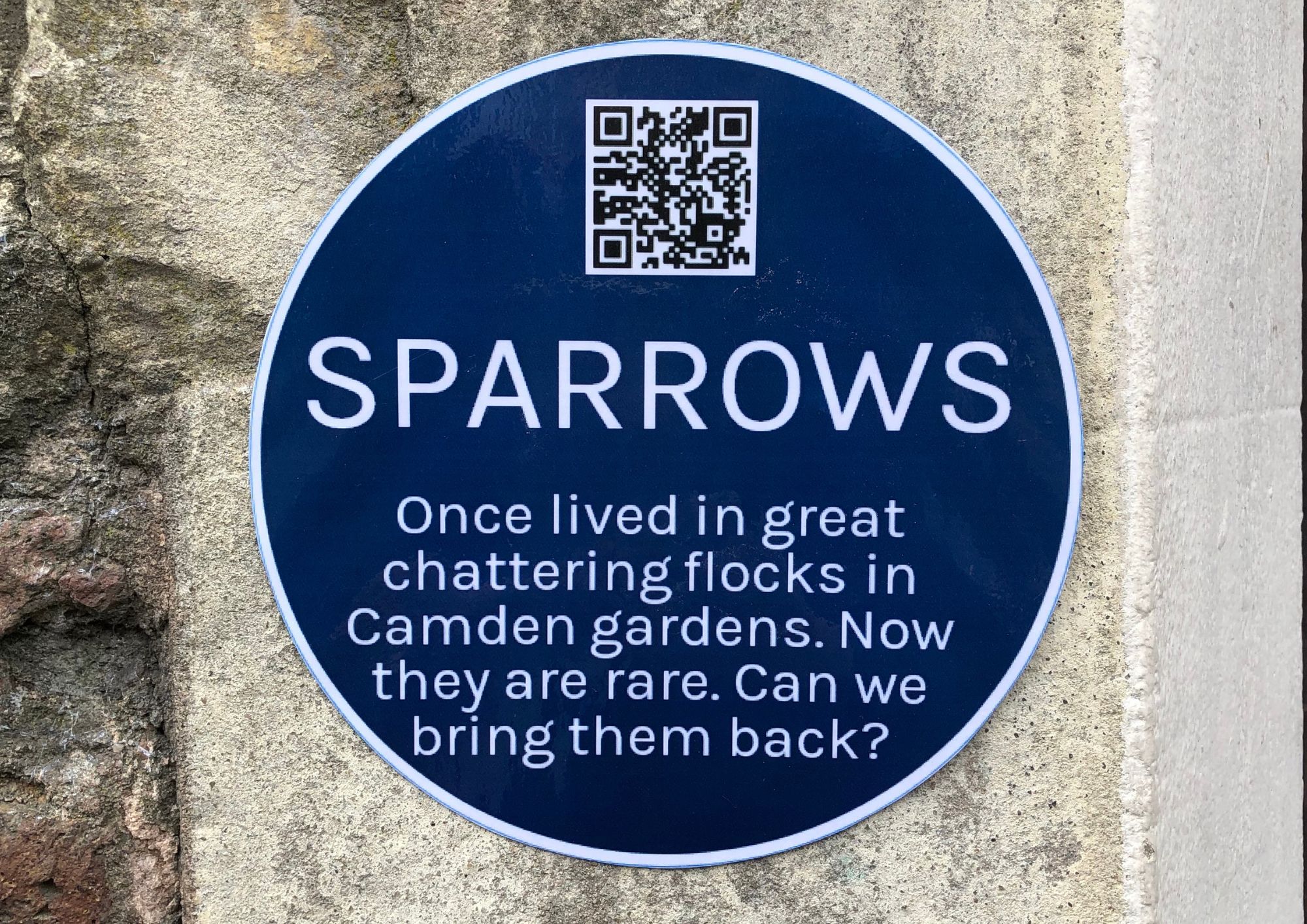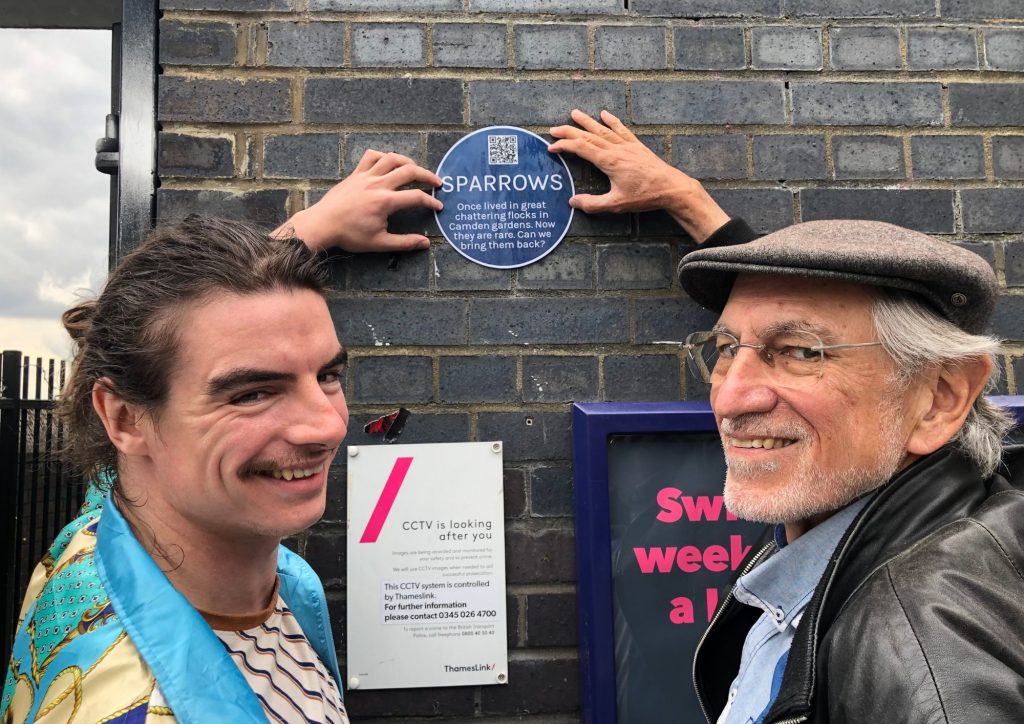Who remembers sparrows? ‘Blue plaques' go up for lost birds
Expert says London is seeing some species disappear from the capital
Friday, 14th June 2024 — By Dan Carrier

One of the plaques that have appeared in Camden
THE Cockney sparrow was once a much-loved Londoner who lived feather-by-jowl with humans and was a daily sight in the skies above Camden.
But in just 10 years the number of the small brown birds darting through our gardens has declined by 50 per cent – and they are under threat of disappearing altogether.
This shocking fact is partly the motivation for conservationists to plaster the borough this week in blue plaques – based on the Historic England markers which denote a house where someone notable lived.
These nature versions, however, highlight just how decimated Camden’s wildlife has become in recent years.
Ecologist Dr Jeff Waage is one of the people behind the scheme, which culminates in a March for Nature, taking place on Saturday, June 22.
It will head from Gloucester Gate in Regent’s Park down to Whitehall with demonstrators aiming to highlight how there has been a shocking 20 per cent across-the-board decline of native species since the 1970s.
Dr Waage said: “One in six species native to Britain are at risk of extinction. Serious monitoring of nature began really in the 1970s and we know what we have lost since then.”
In Camden, the decline has been dramatic.
He said: “We keep an eye on the numbers of a range of wildlife in Kentish Town and there are just not the swifts, the swallows, [or the] housemartins we used to have and we would love to get them back. In the past five years, for example, swifts have really declined. I look up into the sky and see two or three. I used to see 20 just five years ago.”
The swifts have always used Hampstead Heath as a base but the worrying loss of insects has in turn hit the birds who feed on them. Dr Waage said: “It is related to the use of pesticides, farming techniques and the loss of habitat. They are also migratory, and winter in Africa. They are therefore susceptible to drought and other extreme weather events.”
Last year, climate crisis campaign group XR organised a march on parliament to highlight the devastating destruction of native species.
But the biggest NGOs involved with conservation did not attend. That is something that, 12 months on, has changed. Dr Waage said: “It brought together a lot of people interested in nature – 50,000 marched on parliament. But none of the big NGOs, such as the RSPB or the National Trust, showed up.”

Dr Waage said there had been an issue with the public perception of XR and so the campaign group has worked on building alliances with shared interests.
Dr Waage said: “We looked at how we could get them all on board, and this year we are all marching together. It is partly because things have contributed to decline, and it is a really bad situation. The State of Nature report last year [commissioned by Whitehall] shows a really dramatic and further decline – so these NGOs have decided they have to get involved.”
There are answers locally that Dr Waage is working on.
He said: “To help species recover, it is vital we look at how we can create nature corridors for them to use. We have been talking, for example, to Network Rail about improving the quality and diversity of vegetation along train lines.”
They can act as a vital corridor for wildlife, linking the Heath with central London areas, he said, adding: “We can start to improve the situation by recognising what is happening and acting. For example, there are song thrushes on the Heath.
“They used to come down into people’s gardens but by and large they have disappeared from urban areas. We can look at why and help encourage their return.”